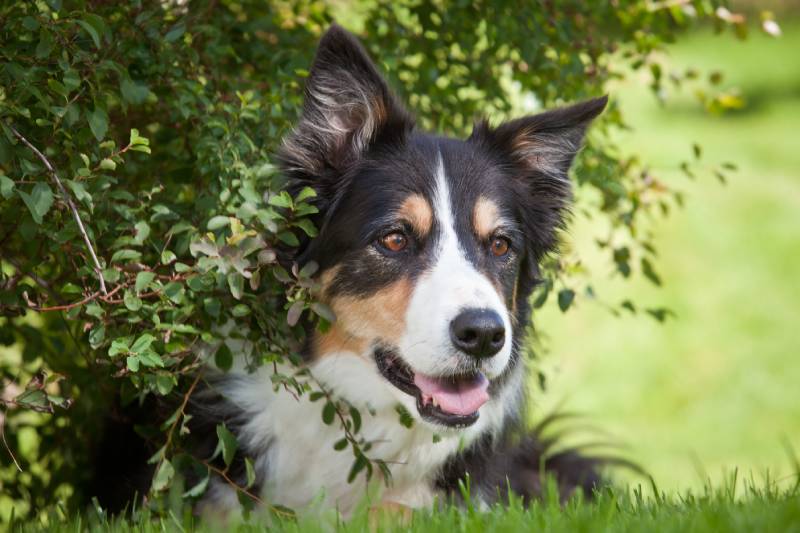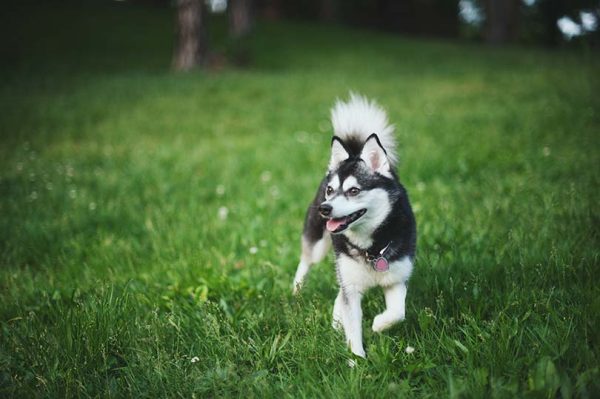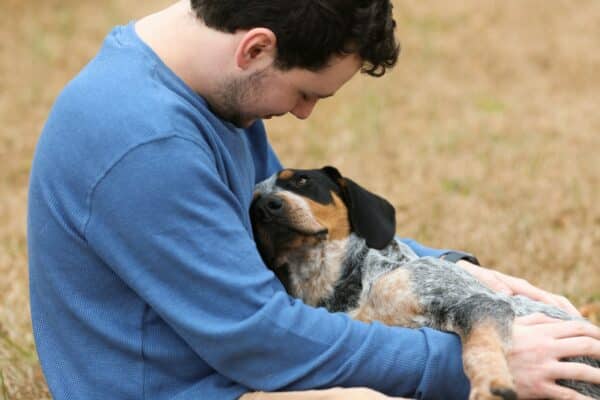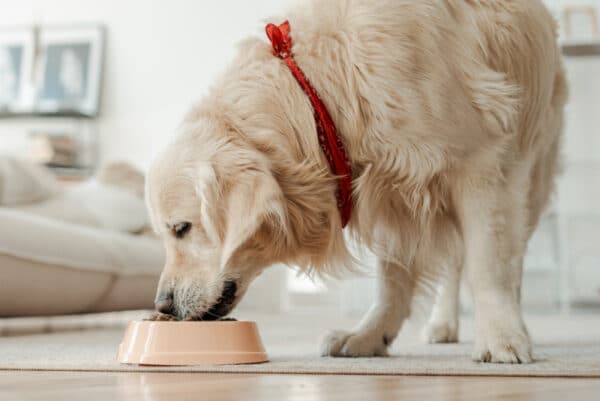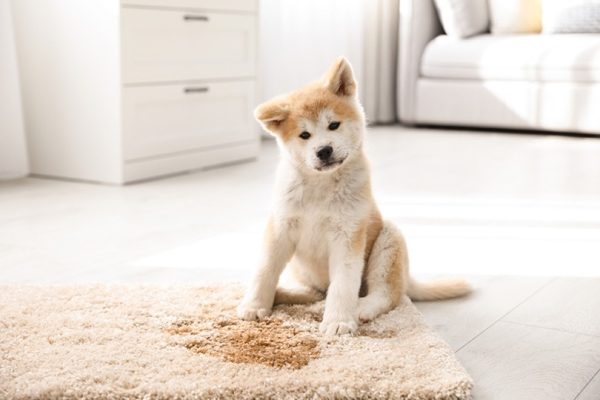Border Collies are considered the most intelligent dogs in the world. These herding dogs are loyal, friendly, and affectionate. They are workaholics, and they love having a job to do—whether herding, playing fetch, or excelling in an agility course. Border Collies come in a few color variations, one of which is the tri-color coat.
In this post, we’ll explore the Border Collie’s rarer tri-color coat and other valuable information about this fascinating canine.
Breed Overview
Height:
18–22 inches
Weight:
30–50 pounds
Lifespan:
12–15 years
Colors:
White, black, tan, red, brown, blue merle
Suitable for:
Active families, families with children, families with livestock
Temperament:
Loyal & loving, intelligent, easy to train, friendly, energetic, affectionate
The tri-color coat is a rarer color variation consisting primarily of black, tan, and white. The most common color variation is the bi-colored black or brown with bands of white covering the chest, neck, and shoulders. Border Collies can also have a tan bi-color, where the tan covers the face, tail, and paws. These dogs can also have a blue merle or red merle coat.
The tri-color coat gives the Border Collie an unusual yet beautiful appearance, with vibrant combinations in the fur. The weather-resistant double-coat is dense and comes in two varieties: a rough, medium-length feathered coat or a shorter, smooth coat.
Tri-Color Border Collie Characteristics

The Earliest Records of the Tri-Color Border Collie in History
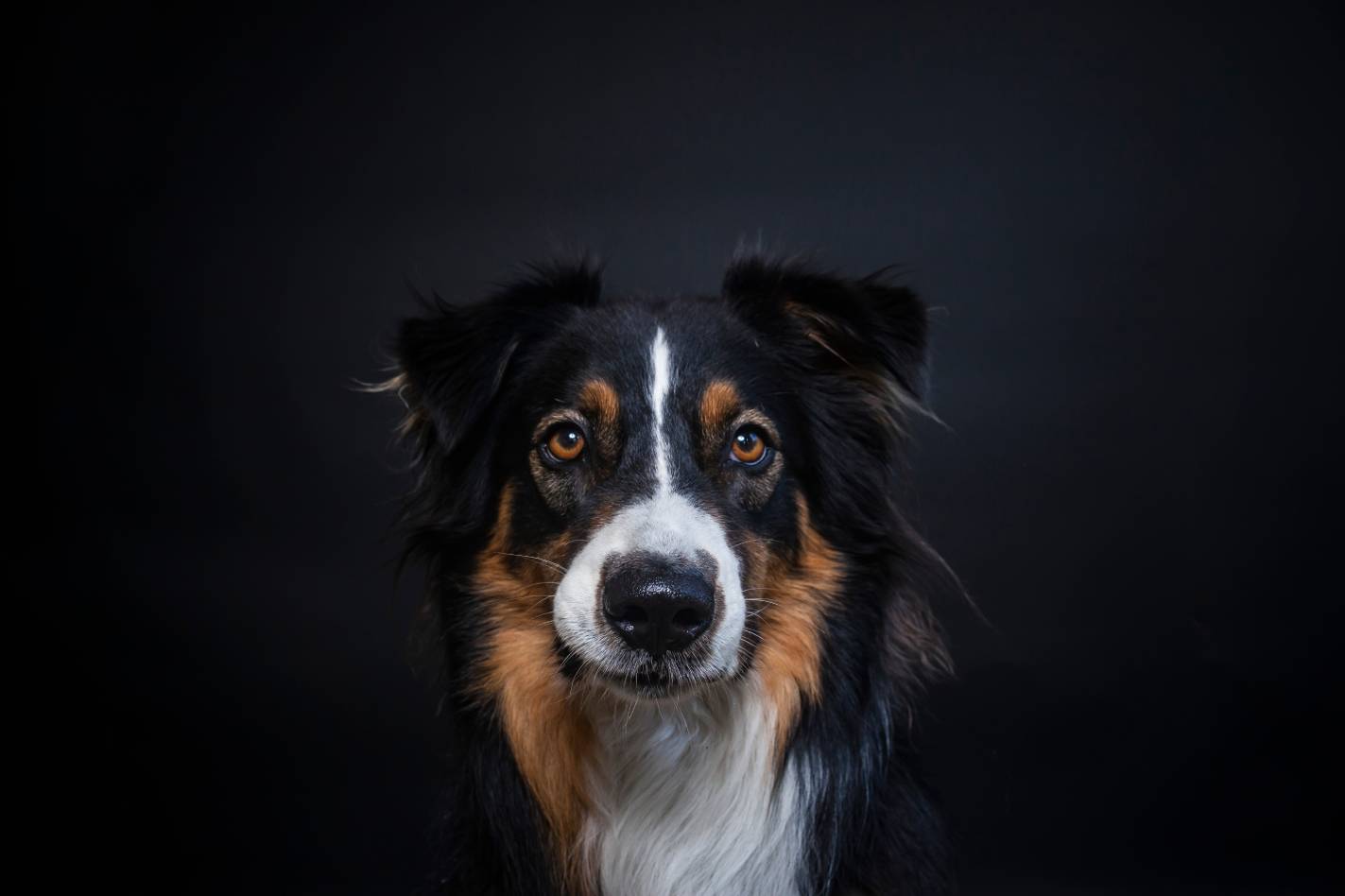
Border Collies have been around for thousands of years and were bred as herding dogs. It’s believed that they originated in the 1700s or 1800s in Northumberland, which lies within the border of two countries, Scotland and England, hence the name “Border” Collie. As for the rarer tri-color coat, the breed started with a tri-colored Border Collie named Old Hemp, who is considered the father of the breed.
Some experts believe these dogs’ roots can be traced back to Roman times some 2,000 years ago when the Romans brought their drover dogs to Britain, but this bit of history is not exactly clear.
How the Border Collie Gained Popularity
In the past, and considering their remarkable herding abilities, Border Collies were considered working dogs; however, they gained popularity in the 19th century when Queen Victoria became a fan of the breed and started owning them as pets. Queen Victoria was not the only person who became a fan. The public started realizing the breed’s affectionate, loving, and loyal nature, which allowed their popularity to increase as companion pets in addition to being exceptional herding dogs.
Border Collies were indispensable during the colonial era, helping farms with sheep herding.
Formal Recognition of the Border Collie
Several organizations recognize the Border Collie and their many color variations. The North American Sheepdog Society was formed in 1940 to protect and promote the breed’s fantastic herding abilities. The American Border Collie Association was founded in 1983 and is the largest registry to date. This non-profit organization was founded by breeders who wanted to keep records of the working Border Collie bloodlines. It also funds health studies and genetic research on the breed.
The American Kennel Club (AKC) placed the breed in a miscellaneous class in 1955 but finally recognized them as their own class of dog breed in 1995. Lastly, the Border Collie Society of America was formed in 1990 and continues to preserve the breed’s integrity and promote responsible breeding and ownership.

Top 5 Unique Facts About the Tri-Colored Border Collie

1. Border Collies Excel in Search and Rescue
Not only are these dogs incredible herders, but they also excel in search and rescue efforts and serve law enforcement. You can find stories of Border Collies rescuing their owners from dire, life-threatening situations. One involved an owner who fell down a 70-foot cliff in a remote area. Saul, the owner’s Border Collie, ran in circles, jumped, and barked to alert rescue teams of his owner’s remote location.
2. The Tri-Colored Coat Comes in Many Colors
The most common tri-colored coat variations are black, white, and tan. However, other color variations include solid colors of blue, black, sable, gold, red, slate, seal, and lilac, typically combined with white or tan. If the tri-color coat is brown, the dog will have a brown nose instead of black.
3. Celebrities Love Border Collies
Border Collies are popular among elite celebrities such as Tiger Woods, Jeff Daniels, James Franco, Selena Gomez, and Jon Bon Jovi. The legendary James Dean loved Border Collies and owned the breed as well.
4. They Have a Unique Crouching Stance
Border Collies are excellent herders and have a unique stealthy crouch when herding. They can be quiet, and the crouching stance allows them to move quickly with impressive precision. They also have an intense stare that allows them to herd livestock with less physical intrusion.
5. Border Collies Are Movie Stars
You can find Border Collies in films such as Babe and Snow Dogs, as well as the TV series Little House on the Prairie. Their intelligence enables them to be a wise choice of dog to use on film, and you’ll also see them in many commercials.

Do Tri-Colored Border Collies Make Good Pets?
No matter the color pattern, Border Collies make exceptional pets. They are loving, loyal, and incredibly intelligent, which allows for smooth housetraining. However, they are incredibly energetic and require an excessive amount of exercise. One must devote the time to exercise them daily, especially if the dog is not being used for herding livestock. They are happiest when they have a job and excel in agility courses and other dog competitions.
They can be quirky, moody, and wary of strangers, but for the most part, they are fun and eager to please their humans. They get along well with other dogs with early socialization, but any introductions should be supervised. The Border Collie does well with children, but don’t be surprised if they “nip” at children’s heels in an attempt to herd them (the nip is not a bite and is harmless). Overall, the Border Collie can be a fun dog to have around.

Conclusion
The Border Collie has many color variations, with the tri-color being the rarer color pattern. Regardless of color or color pattern, the Border Collie’s temperament is the same. They require at least 1½ to 2 hours of daily exercise and get bored and destructive if they do not receive some form of physical and mental stimulation.
The Border Collie is always up for an adventure and makes an excellent pet. Housetraining and tricks are a breeze to learn, given their intelligence, and they are affectionate and loyal. A Border Collie is an excellent choice if you’re looking for an energetic pup to add to your active family.
See also:
Featured Image Credit: Joop Snijder Photography, Shutterstock
